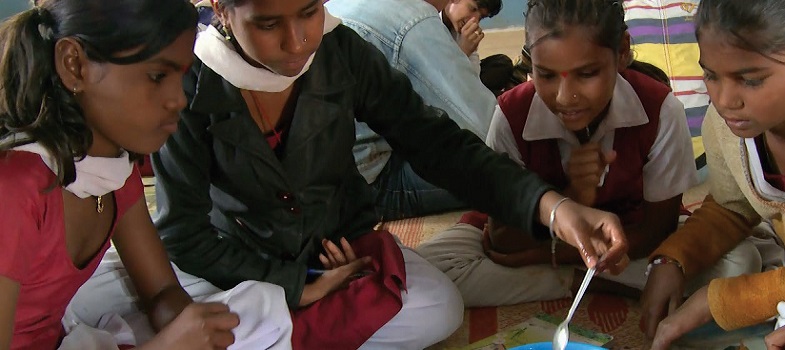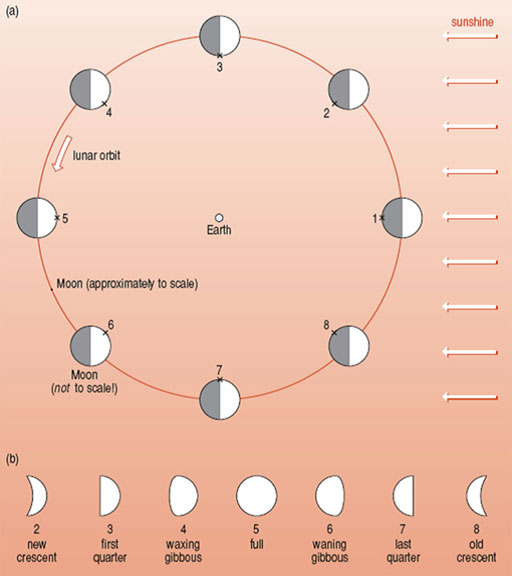Resource 4: The Moon and its relationship to the Earth and the Sun
The Moon is a spherical body that is illuminated by the Sun and reflects some of its light. But how is the Moon placed in relation to the Sun and the Earth, and how does it move?
We know that:
- the Moon is visible at different times during the day and/or night
- the time at which the Moon is visible is closely related to the shape and size of its bright part (phases)
- the Moon is much less bright than the Sun and emits a negligible amount of heat
- the complete cycle of lunar phases has a period of about 29.5 solar days
- the Moon is visible, albeit at different times, for some part of each solar day (provided that it is not hidden by clouds)
- the Moon shows the same face to the Earth at all times
- the Moon is always of the same apparent size
- the apparent size of the Moon is about the same as that of the Sun
- eclipses of the Moon occur relatively rarely (no more than twice a year).
Figure R4.1 will help you to make sense of how the Moon moves around the Earth. It shows how we only see different-sized portions of the Moon at different stages in its orbit. It shows how the phases of the moon arise from its orbit around the Earth. The time between occurrences of the same phase (e.g. full) is, on average, 29.5 days.
You will see that the moon always presents the same face to the Earth: the moon rotates on its axis in the same time that it orbits the Earth, and in the same direction. Moreover, whenever you see a full moon, everyone else on the same side of the Earth will also see a full moon. This applies to a new moon and to every other phase of the Moon as well. The
Please note: You will need to reverse the sequence in the diagram for the southern hemisphere.
Resource 3: A template for pupils to record the shape of the Moon

